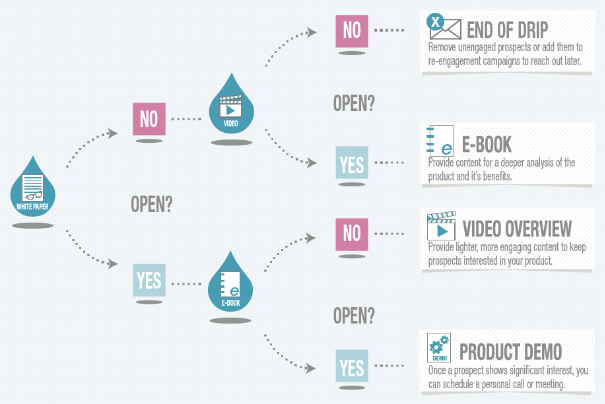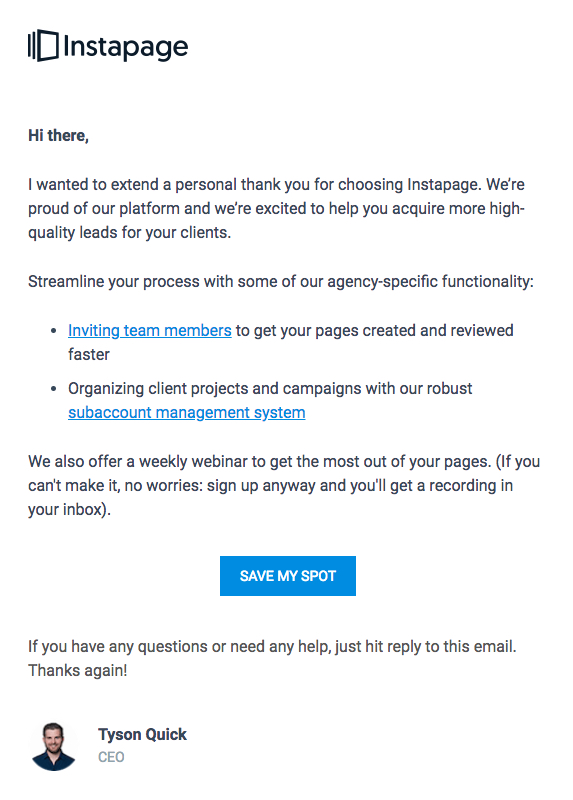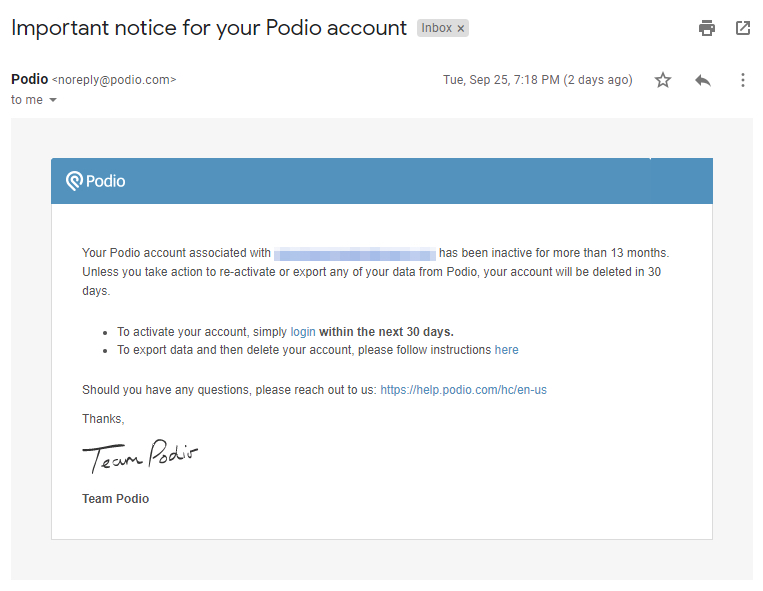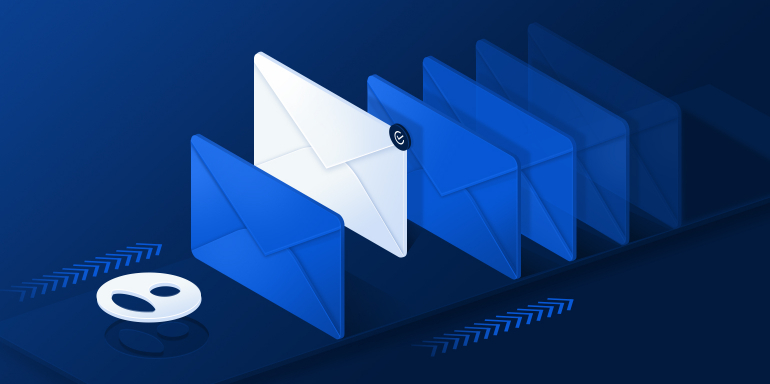The primary goal of an email marketing campaign is to attract the right subscribers — ones that will commit to your call to action. However, in today’s marketing landscape, the audience has complete power. So sending subscribers periodic emails about topics they’re not interested in just won’t cut it.
Striking a balance between list-building and keeping your subscribers engaged is crucial to a sustainable email marketing strategy. A perfect way to accomplish this is with an email drip campaign.
What is an email drip campaign?
Email drip campaigns (aka drip campaigns, drip marketing campaigns, automated email marketing campaigns) are a series of pre-written marketing emails that work together to move consumers toward a final conversion point. They’re referred to as “drip” campaigns because they provide ongoing value to email subscribers by slowly “dripping” helpful information, updates, products, notifications, over time.
Instapage Head of Marketing Operations, Stefano Mazzalai, offers his take:
Email drips are all about relevance and timing. By using a combination of intent signals (i.e., is the user interested in this specific content?), fit (is this the right user for our product?) and behavioral metrics (how engaged/disengaged is the user?), it is possible to create highly segmented drip campaigns with 70%+ open rates and 30%+ click rates.* It is all about how much you know the pain points of each target audience and what you can offer to solve their issues.
*Instapage data
Example
Email marketing drip campaigns are fully automated in which emails are sent based on specific timelines or user actions (or inactions). For example, the system sends an email as soon as someone subscribes to an email list, and then every following Monday for the next ten weeks. Or, if a prospect has been visiting a product upgrade post-click landing page for a few weeks but hasn’t actually upgraded yet, a drip can help explaining the benefits of upgrading.
Simply put, drip campaigns are all about delivering subscribers the right information at the right time to push them further down your funnel to eventually convert.
Drip marketing campaign flowcharts can be as simple or extensive as you want them to be, with any number of rounds and pathways. Here’s one example:

What differentiates email drip campaigns from others is that they:
- Use timing and behavioral triggers to send automated messages
- Send emails that subscribers ultimately signed up for in the first place
- Generate more signups with a lower risk of people unsubscribing
In addition, drip marketing campaigns also come with a list of benefits.
Main benefits of drip email campaigns
Precise segmentation leads to more revenue
Drip marketing can lure in prospects, educate leads, reward customers, and more — all within the same email campaign. By pinpointing, segmenting, and then reaching out to specific user groups, you’re able to reach the right people and times.
A segmented email drip campaign can also build trust with an audience. Rather than blasting your entire email list with the same campaign, subscribers divide into different funnels and approached differently — more appropriately. Since the emails you’re sending are more targeted and relevant, they feel more personalized.
This ultimately leads to fewer unsubscribes and a higher conversion rate. Research actually shows that sending segmented drip emails can drive 18x more revenue for businesses.
More engagement with less effort
Part of the reason a drip campaign generates more revenue than other email campaigns is that it helps boost engagement. Drip emails offer a 119% increase in click rate, which is huge considering drip campaigns require less effort than many others.
First, by proactively sending relevant material to targeted prospects, you remove a lot of the legwork needed to get them interested. Since they’re already interested, you’re essentially shortening the sales cycle by moving leads more quickly through the funnel. A great drip email campaign also weeds out unresponsive site visitors, so it helps saving time or energy trying to make contact.
Second, drip emails depend on automation so they don’t need your constant attention. Although you still have to monitor and test (more on this later), marketing team members don’t need to devote much time creating and sending emails. This is welcome news, especially since pairing marketing automation with an email marketing drip campaign can lead to 20% more sales opportunities.
Continuous conversation to remain top of mind
An email marketing drip campaign can serve as an ongoing conversation between you and your subscribers, allowing you to build on the information in previous emails. Not only does this keep your brand top-of-mind, but also helps establish a trusting relationship. Maintaining regular contact shows recipients that you keep your promises to always deliver more.
Email drip campaign examples
You may want to experiment with a few to help deliver relevant information to targeted readers and potentially convert leads into customers.
Welcome emails
Welcome drips act as an immediate introduction of your brand to new subscribers. They serve as a way to make a great first impression and let them know you’re not all about the big sale.
Welcome emails can be as simple as, “Hi, nice to meet you!”, or you can use them to start promoting some of your basic content. If someone subscribes to your blog, for example, send an email to promote your most recent blog articles or cornerstone content. You can even use them to deliver a welcome coupon like Buy Buy Baby does:

Onboarding emails
Onboarding emails ultimately help convert free trial users into paying customers by educating and nurturing them over time. They already signed up for a free trial, so now it’s your job to explain further your product or service (how to use key features, etc.), how it will help solve their problem, and how you stand out from the competition.
This example shows an email to agencies who signed up for an Instapage trial:

Similar to post-click landing pages, your onboarding emails should only have one clear CTA. Because the more choices people have, the less likely they are to take action.
Re-engagement emails
These are great for contacting inactive prospects and pulling them back in. Whether they’ve been deleting your emails without opening them, or failing to click through once they’re in — re-engagement emails can captivate these once-interested subscribers.
It’s okay to offer them to unsubscribe or cancel their account if they’re no longer interested in your brand. You don’t want to develop a bad reputation by irritating uninterested people.
You can also follow Podio’s lead and subtly list the consequences of remaining inactive or canceling:

Abandoned cart emails
Ditching a shopping cart is extremely common, and yet, an email drip campaign can re-engage those almost-customers:

Remind them what they left in their cart, confirm the items are still available, and even offer a discount code to get them to pull the trigger.
Research shows that when users do return to make a purchase, 72% do so within 24 hours of abandoning the product — and that’s likely, in part, due to compelling abandoned cart emails.
Confirmation emails
Even after you close a sale, your drip email efforts are not complete. You can still use this strategy to confirm a customer’s purchase by setting up a “thank you” autoresponder immediately after they purchase.
Like Shipt does, include a link to further action in that confirmation message to keep customers engaged with your brand beyond the purchase:

In the same drip campaign, consider another email that requests they review your product or service and offering a coupon for future purchases.
5 email drip campaign best practices
Successful campaigns should follow these five guidelines and best practices:
Consider the customer journey
To increase your odds of engagement, send drip emails that are relevant to recipients and their progress through the sales funnel. For example, if someone recently became aware of your business, they’re likely not ready to buy. Here yo still need to nurture with more educational, valuable content before seeing a sales pitch. Subscribers who know your brand, and been considering it for a while, would likely appreciate product/brand comparisons, coupons/discounts, and free trials.
Discover your audience’s needs and pain points, and adjust your messages accordingly. This will help strengthen relationships, and provide you with better campaign results.
Space out emails and create a smooth flow
Be consistent, but pace yourself. Maintain contact, but also leave your audience wanting more. Too much contact could come off as aggressive and could make prospects unsubscribe. As a rule of thumb, don’t send prospects more than one drip email per day. That gives them time to breathe and better digest your content.
Most importantly, an email drip campaign should tie together smoothly. To ensure this happens, write all of the emails in one sitting for consistency. While this may sound time-consuming and intimidating, many of the emails may only be a few paragraphs so they can be written quickly in a short session. There are also several writing tips to simplify the process.
Follow basic email writing tips
To write quality email content, consider these recommendations:
- Focus on value: Always send significant, valuable content so subscribers don’t feel like they’re wasting their time
- Short paragraphs: Big blocks of text are intimidating, especially on small devices, so keep it short and add white space
- Keep emails short at first: Since they don’t fully trust you yet, they may not be willing to give a lot of their time
- Get personal: Sharing non-business related information — such as a captivating story, personal failure, or funny anecdote. This allows prospects to connect with your email and brand
- Avoid marketing language and large media: Both of these can reduce deliverability. Because email clients like Gmail and Outlook are always looking for reasons to send your emails to the Promotions folder
- Use compelling email subject lines: Getting people to open the message is the first step, so the subject line must be compelling
- Create urgency: Set deadlines and offer exclusive deals
- Include a CTA: Show them what the next step is by offering more value, such as visiting an email post-click landing page to download a whitepaper
- Add a P.S.: Tease the next email you’ll send and get the subscriber excited for it
Connect your campaign to other channels
Drip campaigns don’t exist in a vacuum. Strive to make all of your advertising channels work together in harmony to create maximum engagement.
For example, adding “Follow us on Instagram” to the end of your emails lets people know you’re active on social. You can also use similar content across social posts, paid ads, and blog posts to generate excitement and remain consistent.
Continuously test your campaigns
Just because your emails are automated doesn’t mean you can neglect them altogether. A/B testing is the answer to fine-tuning and optimizing your drip campaigns.
After all the time you spent targeting specific user segments, it’s important to reevaluate and readjust those segments as necessary. It’s also recommended to tweak different elements (subject lines, language, tone, CTAs, etc.) to see what performs best. Even seemingly trivial variations can help increase engagement and conversions.
Start planning your next campaign today
The key to creating a high-converting campaign is to take subscribers on an engaging journey. Delivering relevant messages to the right people at the best times can help achieve that.
To complete your campaign and reduce wasted clicks, be sure to perfect the post-click landing page as well. Download the ebook below and see how to get more conversions.

See the Instapage Enterprise Plan in Action.
Demo includes AdMap™, Personalization, AMP,
Global Blocks, heatmaps & more.
